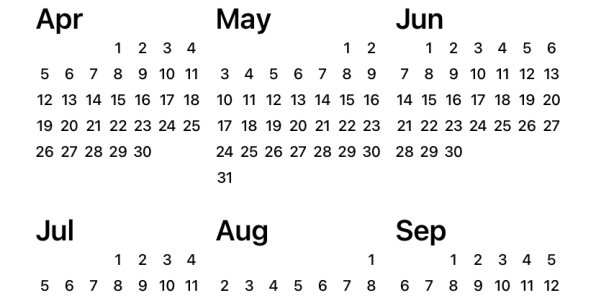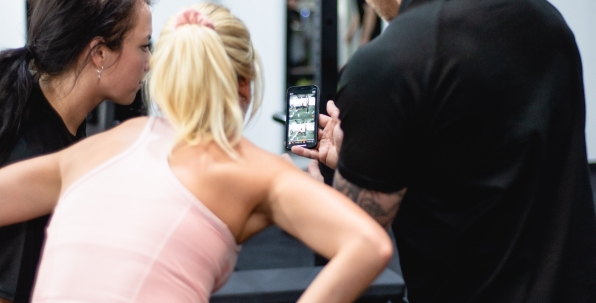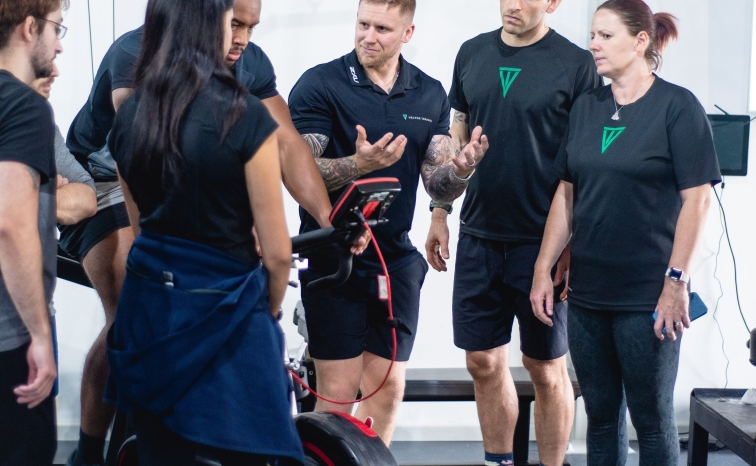You’ll learn so much on your course to become a qualified Personal Trainer. You’ll develop the scientific understanding of how the body works, to the different methods used when training for different goals. Your course will develop your knowledge of nutrition and how to plan programmes and even help you with the core knowledge of business and how to generate leads.
But there are some things you simply cannot learn on a course, and some things you won’t be prepared for when you hit the gym floor.
We’ve spoken to 10 successful Personal Trainers, from across the industry to get their opinion, so you can be even more prepared for when you start your new career.
Your Diary is gold
Your diary is gold - Put everything in it. The more you use it the more efficient and productive you will be. Log everything from admin, programming, calls, meetings, your training, your downtime etc. This includes your personal life events, because you need to make time for yourself in there too.
So make your diary your priority every day. Ensure you use it religiously, and really analyse your own timetable before you consider if future commitments or projects are feasible. This will make sure you don’t over commit and lose the quality of service you are providing to your current clients. Because as they say, acquiring new clients can cost as much as 5 times as retaining those you currently have.

How it feels when a client leaves you
Although we all like to think this won’t happen – it always does. Clients stop working with trainers for a number of reasons, this could be financial, a new commitment or just simply they’re not enjoying the relationship anymore and they’re not seeing the results they want.
Although this will hurt, always ask for feedback. Especially the reasons given that are related to the service, not hitting goals or them not enjoying it anymore. Get feedback and act on it quickly. Take time to reflect on this client and your practice. Did you let this slip? Did you continue to improve your services to that client?
If the reasons are financial or the client has new commitments, maybe try to keep them on board with a different service. Being understanding and adapting to them can see you held up in even higher esteem with clients, and that almost always leads to new client referrals.
Dealing with your client’s other problems
As you become more connected with your clients and they trust you even more, you are often one of the people they confine in, whether that be home problems or issues at work. You almost become more of a life coach in some cases rather than a Personal Trainer.
When this happens, and often it does, listen closely to them first, acknowledge what they are saying and be receptive to their feelings. Encourage them to seek professional help via a councilor if they can. Always follow up during the next session to see if they took your advice and to check in with how they are feeling. Mental health is a serious thing that can affect so many of us. If you can – then point them in the right direction to get help.
How to actually get sales
The first rule of sales is the person who is buying the product needs to know who you are, they have to like you and they must trust you.
There’s a ream of information about building your presence, through social media and building trust through free sessions or free educational content.
A simple but effective method that has stood the test of time for successful Personal Trainers doesn’t involve any free giveaways or building a huge online following.
It’s all about building relationships through talking to members and potential clients. Trainers recommend having a little black book or a note tab on your phone with a list of people you have spoken to or had contact with across the gym.
Have a number of facts about the person before you offer any service. Then reiterate these when you next talk. Easy conversation starters are a way to build familiarity with future clients and once you start familiarising yourself with members and getting to know them more, they will start to feel comfortable in asking for training advice. Once this happens, you know you are making progress in creating trust.
Oh and remember, when it comes to pricing, you’re better off just saying it. Your price won’t change no matter how much you beat around the bush so just give it to them straight.
Find their why

Find your client's why! Why they want to actually train? Why they actually want to make changes? Why is now the time for them to put this into action? and not just look good on a beach in 12 weeks time. Not all clients want a transformation.
Finding their initial why is a start, but make it your duty to find out how that will impact their life and all the bene
fits they will gain and who they will need to become to reach that goal. Remember, what you think a client needs and what they actually need can be two very different things.
Finding your client’s why often means becoming a better listener - This can and should always improve throughout your career. Never under value the importance of listening to your client and making that strong connection with them. Always follow up during the next session with a comment you remembered from the previous session. Keep referring to and building your programmes around their why.
When a client isn’t on your wavelength
Not everyone will be the ideal client for you and likewise you may not turn out to be the type of trainer that client wants or needs.
For a number of reasons they may not be on your wavelength. When this happens you have a few options. Reflect on what you’re doing and your communication methods. Or consider introducing some different training methods that could be behaviour change strategies like setting manageable SMART goals that aren’t just gym related. Clients need to change their whole behaviour and mindset before they can achieve their fitness goals.
Another thing to consider is simply ending the service. Many Personal Trainers will tell you, if your client just isn’t listening, not putting the work in then you’re wasting your time. It isn’t just about picking up an hourly fee from a client, being a PT is more than that. Just be honest, and leave them. It’ll do wonders to your state of mind too!
Wade through the Bullsh*t
Everyone seems to be a fitness expert online these days. You need to wade through the bullsh*t and find what is true and what is accurate, compared to social media propaganda which are often insane exercises just for camera.
You’ll have to do a lot of myth-busting homework when seeing things online. Always research and get a 3rd and 4th opinion on different training methods and advice.
Get back to basics when you’re communicating with your clients. Sieve out the unnecessary jargon and Latin terms some trainers use to make them sound clever to their client, which ultimately limits the amount of information the client absorbs.
Remember it’s all relative to your client and environment. First you need to really know your client and find their why, and then you can align training with their goals with proven factual training methods.












